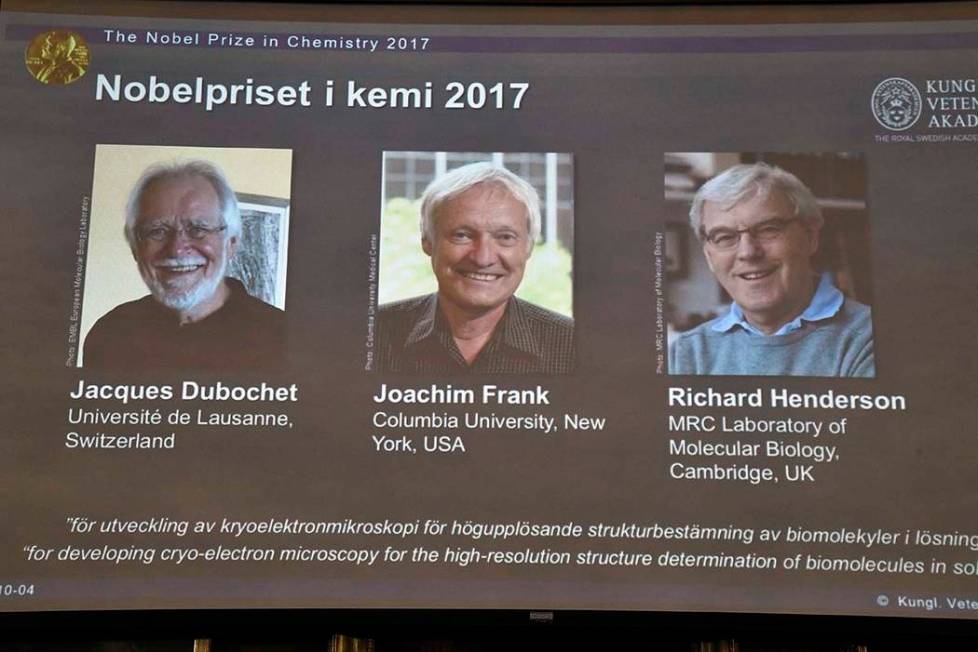Electron microscope pioneers win Nobel Prize in Chemistry

STOCKHOLM — Three researchers based in the U.S., U.K. and Switzerland won the Nobel Prize in Chemistry on Wednesday for developments in electron microscopy.
The 9-million-kronor ($1.1 million) prize is shared by Jacques Dubochet of the University of Lausanne, Joachim Frank at New York’s Columbia University and Richard Henderson of MRC Laboratory of Molecular Biology in Cambridge, Britain.
The Royal Swedish Academy of Sciences said their method, called cryo-electron microscopy, allows researchers to “freeze biomolecules” mid-movement and visualize processes they have never previously seen.
The development, it said, “is decisive for both the basic understanding of life’s chemistry and for the development of pharmaceuticals.”
The annual prize rewards researchers for major advances in studying the infinitesimal bits of material that are the building blocks of life.
Recent prizes have gone to scientists who developed molecular “machines” — molecules with controllable motions — and who mapped how cells repair damaged DNA, leading to improved cancer treatments.
It’s the third Nobel announced this week.
The medicine prize went to three Americans studying circadian rhythms: Jeffrey C. Hall, Michael Rosbash and Michael W. Young. The physics prize went to Rainer Weiss, Barry Barish and Kip Thorne for detecting gravitational waves.
The literature winner will be named Thursday and the peace prize will be announced Friday.